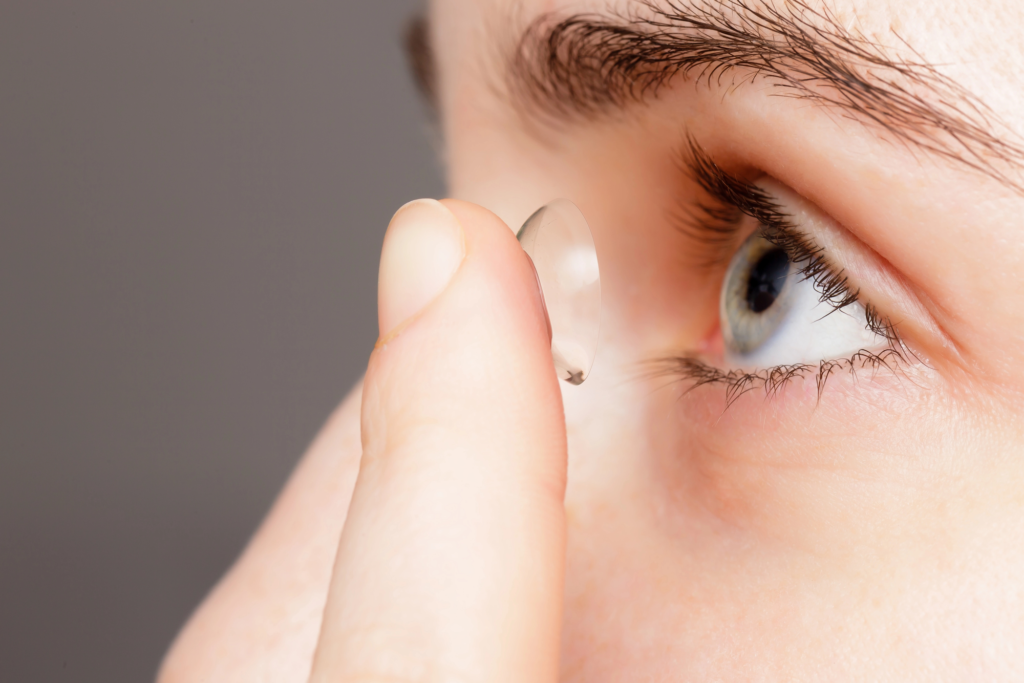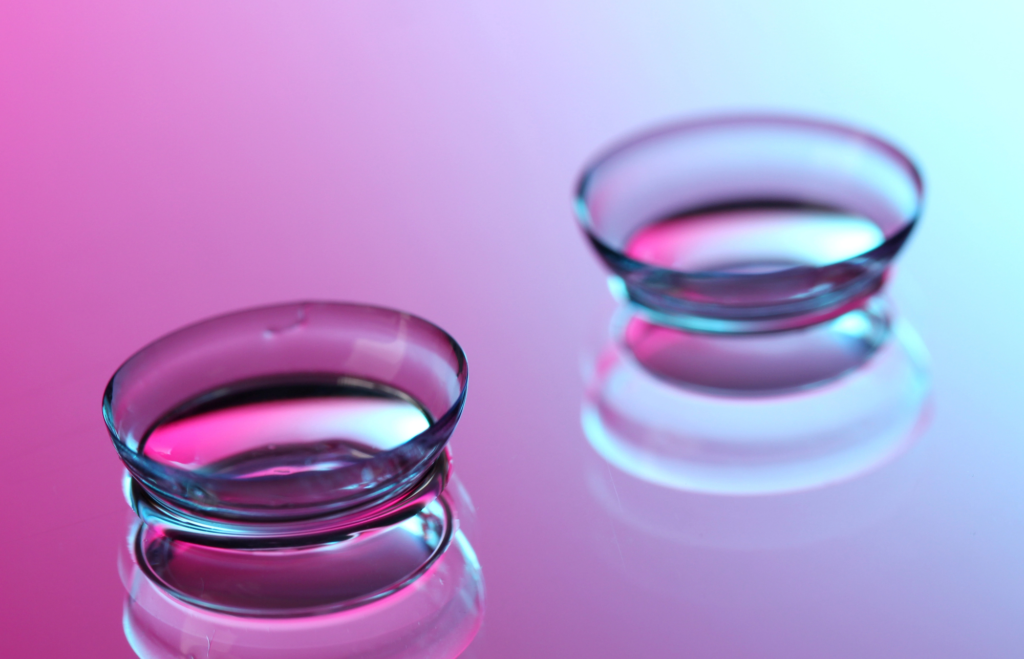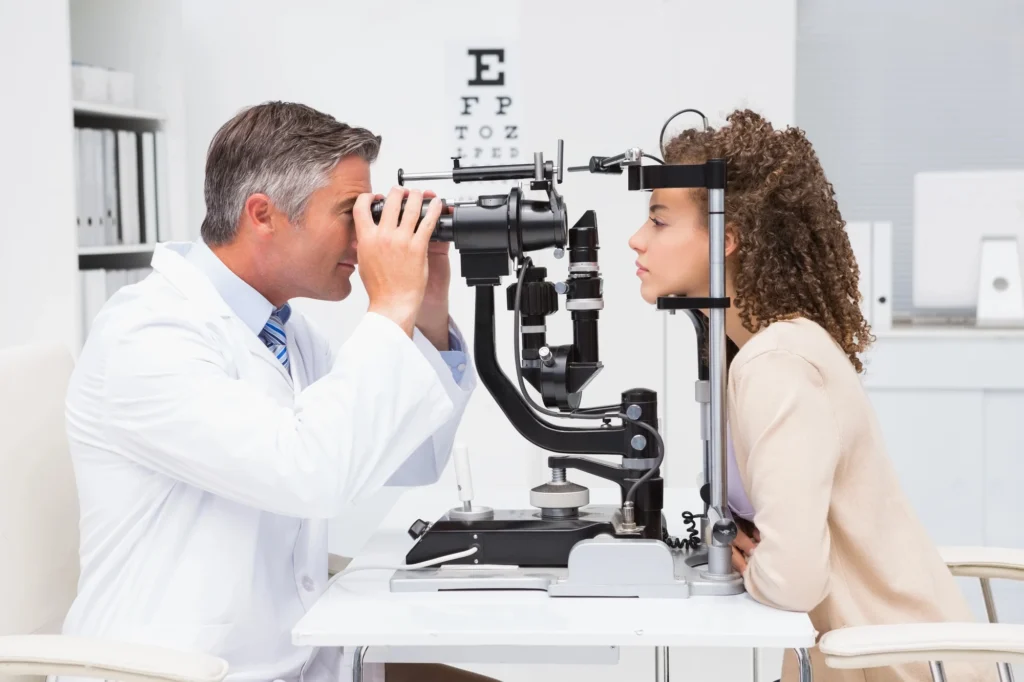Do you feel like Harry Potter? Not the magic part, but the constantly breaking your glasses part? Unfortunately, you don’t have a Hermoine to come and fix them.
But you do have an eye doctor, who can address any frustrations you’re having with your glasses. If you think it’s time to transition from glasses to contacts, you might be right.
Here are some things to think about before you do.
Why Switch to Contacts?
There are the obvious reasons to switch to contacts, like not having to clean your glasses all the time, but there are some medical benefits too. While, of course, they have risks, a lot of people do better with contacts than glasses.
Here are some reasons why.
1. Personalized Vision
Have you heard of transition lenses? If you have trouble seeing both far away and close up, you may even have them. Some people like to get transition contact lenses, which are an option.
But your prescription can get even more personalized than that. Some people like to have one contact for far away and one for up close. The eyes will naturally adjust and use the eye that’s more equipped for whatever you’re looking at.
People who don’t like transition lenses seem to love this mono-vision concept. It feels like more natural vision, especially if you’re getting contacts later in life.
2. They Don’t Break or Fog (Etc)
While you can absolutely damage your contact lenses by dropping them or scratching them, they’re not as fragile as glasses. Since they don’t steam up or move around, you can wear your contacts during exercise.
You also don’t have to remember your readers, if you have your contacts in. It gives you one or two fewer things to carry and more ease of movement when you’re on the go.
They also don’t glare or reflect light, as glasses can do in certain situations.
Finally, your contact covers the whole light-entering part of your eye, so there are no gaps in vision. (Like in the peripherals of your glasses.
3. They’re Invisible
It’s perfectly acceptable and even stylish to wear glasses if you pick out the right pair for your face shape. But not all of us have the money or the selection to find a pair of frames we love.
And others of us got made fun of as a kid and called names for needing glasses. Maybe you even get acne where the bridge of your glasses rests on your nose.
Whatever your aesthetic reason not to wear glasses is, contacts can fix it. No one can tell you’re wearing contacts, unless they’re looking very, very close to your eyes.
You can even get contacts in different colors, though your eye doctor most likely won’t recommend that. (Especially if you don’t need them).
If you don’t need contacts and want to change the color of your irises, it introduces an unnecessary risk of infection. Most ophthalmologists are against this practice. At least long-term.
Making the Transition From Glasses to Contacts
Now that you’re sure contacts are the right choice for you, let’s talk about some details. There are risks in wearing contacts, which your doctor will talk to you about.
Most of the risk can be mitigated if you follow your care instructions to a T.
To reduce risk and get the best life from your lenses, follow these tips.
1. Always Wash Your Hands
There was a pretty gross study that showed 50% percent of adults (averaged) don’t wash their hands regularly. And while that’s their business, you can’t be one of them if you wear contacts.
Obviously, we recommend regularly washing your hands, but if you only do it twice a day, do it when you put your contacts in and take them out.
When you put in contacts, you’re not only touching the membrane of your eye, you’re touching the lens. The lens can pick up dirt and bacteria from your fingers, which you then basically sandwich onto your eye.
You can see how infections happen when people don’t practice good contact hygiene.
2. Don’t Switch Eyes
When you get your contacts, they’ll come in a two pack- one for your left eye and one for your right. Your contact lens case should have a left and right reservoir as well. You don’t want to switch your contacts from one eye to another.
Each eye has slightly different bacteria than the other. Mixing up your contact lenses can disturb the other eye’s natural eco-system if you will.
3. Don’t Overwear Your Contacts
While there are options for affordable contact lenses now, the costs can still add up. To combat this, a lot of people wear dailies or weeklies for longer than they’re made to be worn.
This is another time we see eye infections. Short-wear contacts can start to degrade or get damaged over time. Throw away your contacts when it’s time and open the new pair.
4. Start Slow
Finally, the day you put your contacts in for the first time might be a struggle. Your doctor will walk you through how to put them in, but it feels a little funny and there’s a learning curve.
If it takes you a few tries, be patient with yourself. You’ll get the hang of it!
You may only want to wear your contacts for a few hours a day as you start out. Some people like a slower transition and others put their contacts in and never look back.
Changing the Lens(es)
Contact lenses have changed many peoples lives for the better. The majority of people who get contacts stick with them for life.
Other people try the transition from glasses to contacts then find out it’s not for them – and that’s okay. But you’ll never know which one you are if you never try.
Here are some more helpful tips for contact lens care if you want to see what kind of daily tasks you’re in for.




